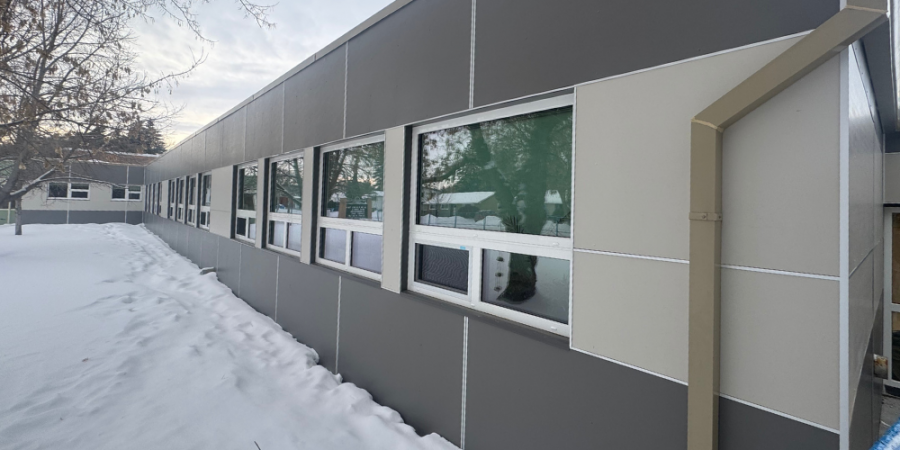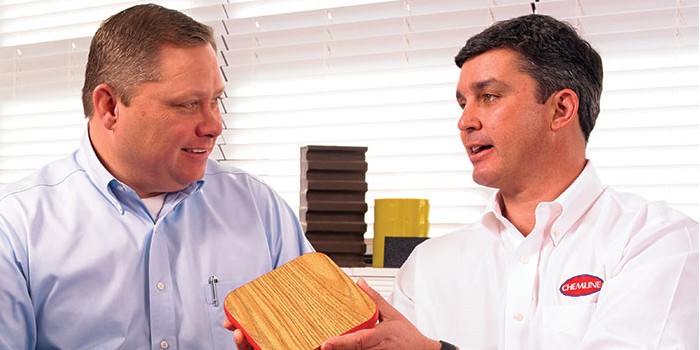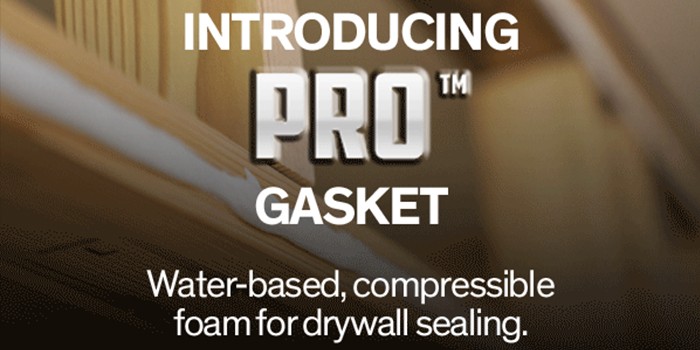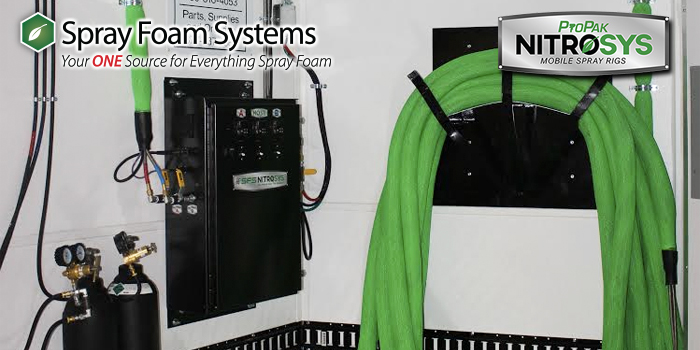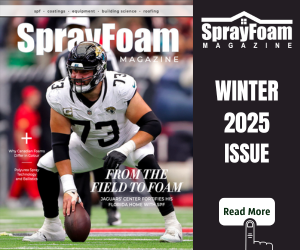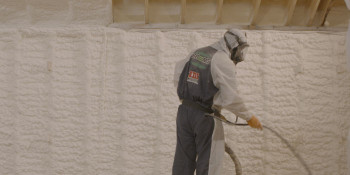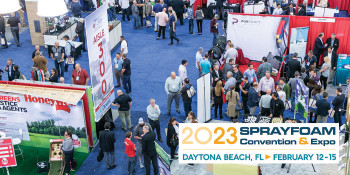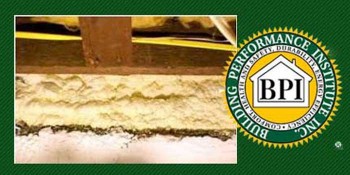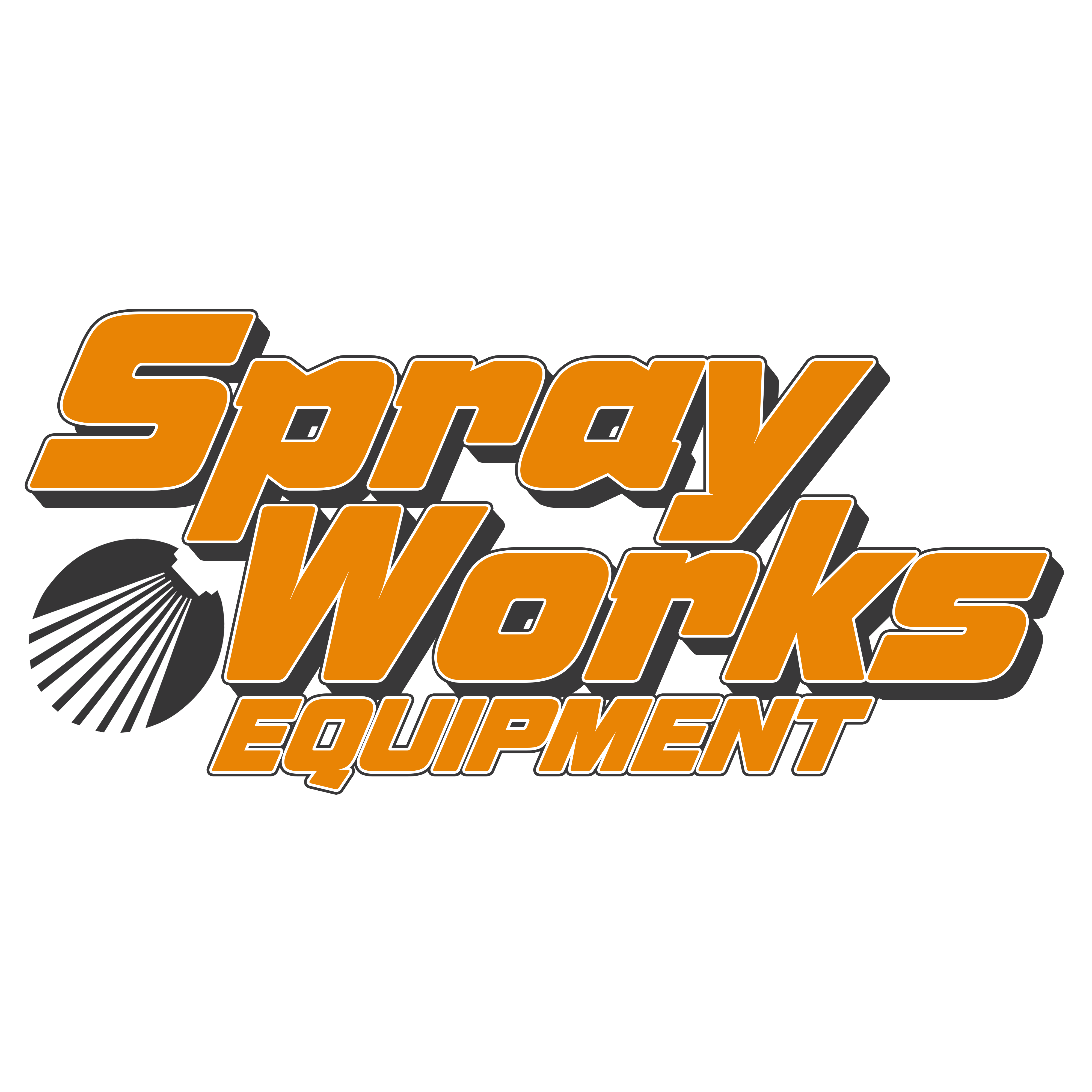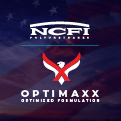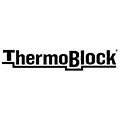Farming Fortified
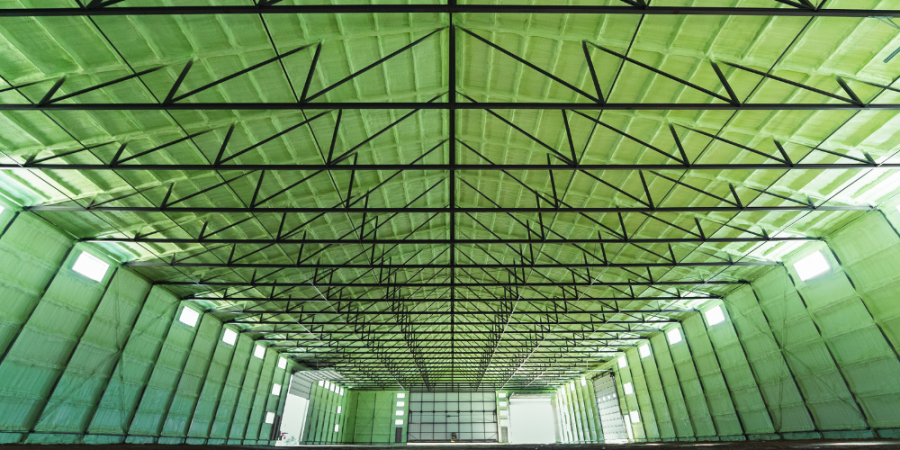

Spray Foam Magazine – Late Summer 2025 – When you picture a farm building, do you envision a small stick-built structure with a faded red paint job and white-crossed sliding doors, topped with a squeaky rooster weathervane? Today, those traditional barn-like structures are found most often on residential properties, a la the “modern farmhouse” design trend. However, on an actual working farm, that barn design is a relic of a bygone era. The structures used by agricultural producers today are frequently huge metal outbuildings, known sometimes as pole barns or farm shops. In general, these shop buildings are relatively inexpensive to build and can be customized to the exact specifications a farmer needs. It’s an economical solution when you need a large, heavy-duty outbuilding, but one that requires a few alterations to really withstand the test of time.
Such was the case with a Canadian grain and cattle operation, who called on Fast Group of Companies’ Fast Foam division to fortify the walls and roof of their newly-constructed outbuilding using Genyk Boreal Elite closed-cell foam. Fast Foam’s Tony Japp and his team of three had just two weeks to spray the building, a 270 by 120-foot steel-framed monolith with 24 foot-walls located out to the village of Prud'Homme, Saskatchewan. The owner, Orosz Farms, plans to finish the building to use as a farm shop for their grain and cattle operation. When it’s done, it’ll have plenty of space and storage to house semi-trucks, farming equipment, and even a wash bay to hose off their many machines at the end of a long day. The 32,000 pounds of closed-cell foam installed on the shop’s walls and roof were one of the key components to making their farm shop goals a reality, and Fast Foam was just the company to make it happen.
Fast Group of Companies has four locations in Canada; three in Saskatchewan, and one in Winnipeg, Manitoba. Its three divisions operate under the names Fast Lift, Fast Foam, and Fast Roof. Spray foam is a staple of their service offerings, whether they’re stabilizing concrete, refinishing roofs, or coating massive buildings like the one for Orosz Farms.
Foam on the Farm? A Different Kind of Stable
The client had commissioned the outbuilding through steel fabricators Melview Metals, who produce and install custom metal shops of any size. They contacted Fast Foam about installing closed-cell foam to the building to make it more robust.
"Their main purpose was for stability and rigidity, since the building is so big and it gets so windy here." Japp explained, adding that the building would eventually have a concrete floor installed, but the process would take longer. In the meantime, having the Genyk foam installed will reduce racking from the wind whipping across the pastures.
Fast Foam was looking forward to spraying the building as soon as construction wrapped, but unforeseen delays meant the building wasn’t ready for the next step until December 2024. By then it was too cold for the foam to cure even if they weren’t in Saskatchewan. The only thing they could do was to wait out the long winter and get ready to spray the foam at the first sign of spring—and they did just that.
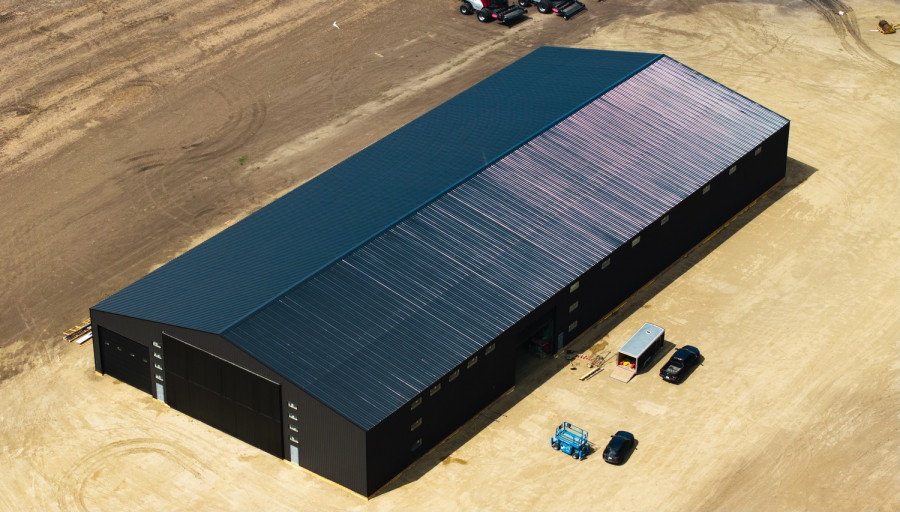
An aerial shot of the farm shop with one of the foam rigs parked on the side, dwarfed in comparison to the hulking building.
Prep: Putting Hand to Plough
When spring finally rolled around, the Fast Foam team of three headed out to Orosz Farms. Upon arriving, they were greeted by the sprawling, jet-black metal building they’d be working inside of for the next two weeks. After scoping out the site, it was clear this wouldn’t be a complex job, but it would be tiring. At 270 feet long, 120 feet wide and with 24 foot walls, it would certainly be a marathon with a lot of tough overhead spraying involved.
They’d have to tailor their approach to avoid arm fatigue and repetitive strain, and to also keep morale high as they chugged along. They knew it would be labor-intensive, but there were some upsides.
One silver lining of working in an essentially brand-new building is that it cut surface prep time down to just about zilch. Although the steel substrate was already clean and free of debris, the Fast Foam team still had plenty to do prior to breaking out the foam guns, such as masking the non-foamed areas in protective plastic.
Inside, the building was mostly empty with a dirt floor, plus multiple bay doors and more windows than usual for an outbuilding– about 25 on each 270-foot wall.
The many doors and windows needed to be masked with tarps and poly sheeting or overspray would mar their shine. Masking the dirt floor was less of a priority since the owners intended to eventually install concrete. Floor aside, anything not to be soon covered in foam had to be covered with plastic, including their scissor lifts.
“We rented the scissor lifts, and we tried to prep them extremely well so they don’t get covered in foam, since it’s a lot of overhead spraying,” said Japp. He explained that they also applied surface release to the lift’s more difficult to mask areas. The surface release made overspray clean-up easier later on, but he added, “Not getting foam on there in the first place is definitely the easiest option.”
The team covered just about every inch of the lifts in poly, taping the protective plastic even around the hand controls. This rigorous prep work stopped foam overspray from raining down onto the lifts during the weeks of overhead spraying soon to follow, and ensured they’d get their deposit back from the lift rental at the end of the job.
After hanging poly tarps across all the shop’s doors and the many windows, then wrapping the scissor lifts in more plastic than last night’s leftovers, the team fired up their equipment and reviewed their plan of attack for foaming the farm shop.
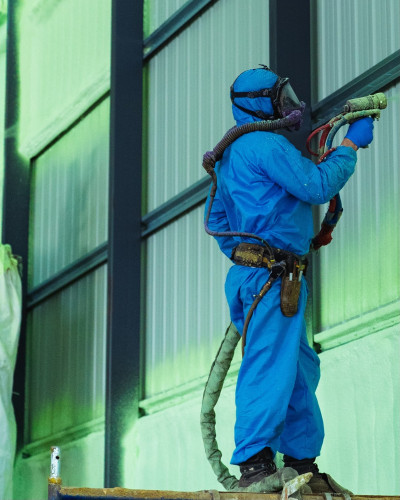
Spraying the walls was much easier because it didn't involve continuous overhead spraying.
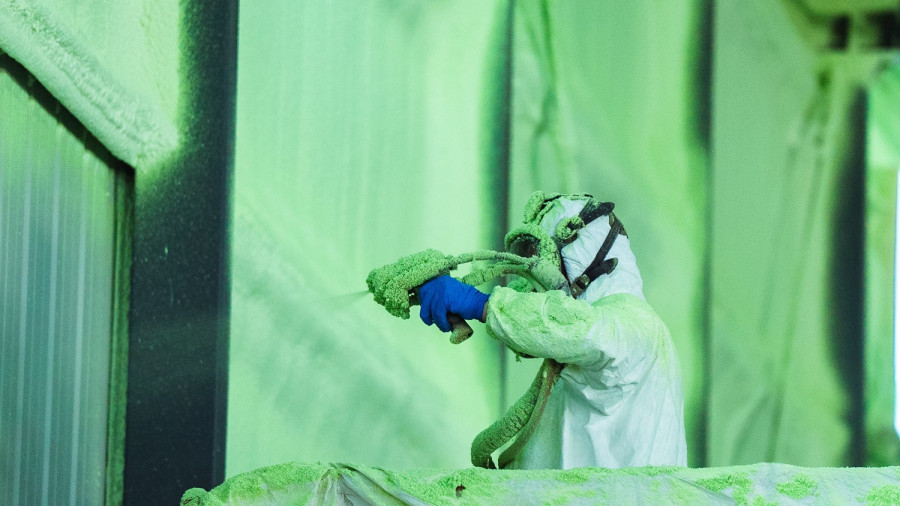
The Process: Think a Marathon, Not a Sprint
According to Japp, spraying the farm shop was straightforward yet strenuous, and maintaining the sprayer’s stamina was critical. Over the next two weeks, they’d average 12-hour days and spend the majority of that time spraying overhead with their arms squeezing a spray gun, sometimes in awkward positions for an extended period of time. With that in mind, the team decided to eat the frog and tackle the hardest part of the job first—installing the Genyk foam to the roof and gable ends, which had eight-foot trusses in the center. The reasoning was simple, as Japp explained:
"If you can get the hard stuff out of the way, then you get to do the easiest part at the end when you're the most tired.”
One exception: if they were having gun issues, they might do a quick pass along the wall to calibrate the gun and dial in temperatures before ascending the lift again. But for the most part, everyone stuck to the plan. By getting the hardest part of the job out of the way early, the sprayers energy levels stayed consistent, and so did the quality of their work.
They also took care to protect themselves by wearing 3M masks with Fresh Air Respirators, along with protective coveralls, and gloves. Plus, they incorporated regular breaks to stretch and hydrate.
Three to five people worked on site at any given time, with the guys from TCJ insulation traveling out from Winnipeg to help as their schedule permitted. The farm shop’s sprawling size, the long hours on shift, and spraying at awkward angles could have made the job a drag, but Japp credits his solid team and their first-rate equipment setup for keeping things moving along.
"We had experienced sprayers on site who know how to make good foam, and our one truck can hold 15 sets of foam, allowing us to spray a building of that size while only reloading our trucks once,” Japp said.
Equipment: No Horsing Around
Spending a long period of time spraying overhead might leave spray technicians with a temporary crick in the neck, but Fast Foam’s rig and equipment setups kept the backbreaking labor to a minimum. Their three-rig setup complete with totes allowed them to install 32,000 LBS of Genyk Boreal Elite foam without having to stop more than once.
Fast Foam's full fleet features two trucks and three rigs. The first truck is outfitted with a double-pumper Graco H-25 and a Graco HXP-2. The second truck contained a single pump PMC-PH-40. All rigs have trusty Graco AP Fusion guns and tote to tank setups.
The tote setup allows them to continuously spray massive amounts of foam without regularly having to pause and switch out drums. As Japp explained, the one time they did need to switch out a tote took mere minutes using an on-site skid steer.
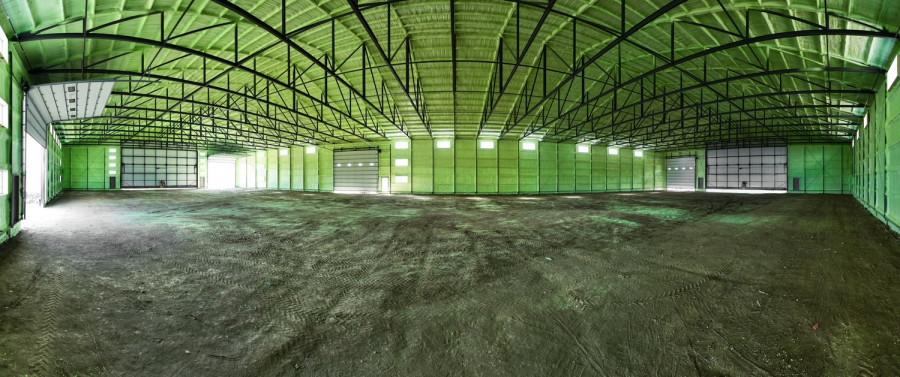
The sprayers installed the foam in two passes, which Japp says is their standard for any layer thicker than one inch to give the foam’s temperature time to stabilize. Layering the foam on all at once causes the metal to heat up, which risks leaving a wavy, warped texture visible on the building’s facade. While these ripples don't compromise the building’s integrity, giving a brand-new building a surprise metal makeover is less than ideal. Spraying in two passes reduces the risk of heat-induced warping.
"When you have a big, beautiful building like that, we want to keep it looking exactly like it did when we started," said Japp. In total, they installed three inches of Genyk Boreal Elite foam on the roof and another two inches on the walls.
Having great help, extra hands, and an elite rig setup allowed Fast to live up to their name. They spent just under two weeks at the farm, and spraying the foam took them only ten days to complete.
The foam won’t be visible anymore once the shop is completely finished, but that's okay. Sandwiched between the metal and the sheetrock, the closed-cell foam will work overtime for the life of the building, adding a layer of rigidity to brace against windy weather. In the future when the concrete floors get poured, there’s a high chance Fast will end up back on the farm to install a two-inch under-slab layer. Fast Foam’s attentiveness and technical talent earned them a happy customer with potentially more work in the future. Is there a better sign of a job well done than that?
Published by Spray Foam Magazine
SprayFoam / Spray Foam Insulation
Disqus website name not provided.







